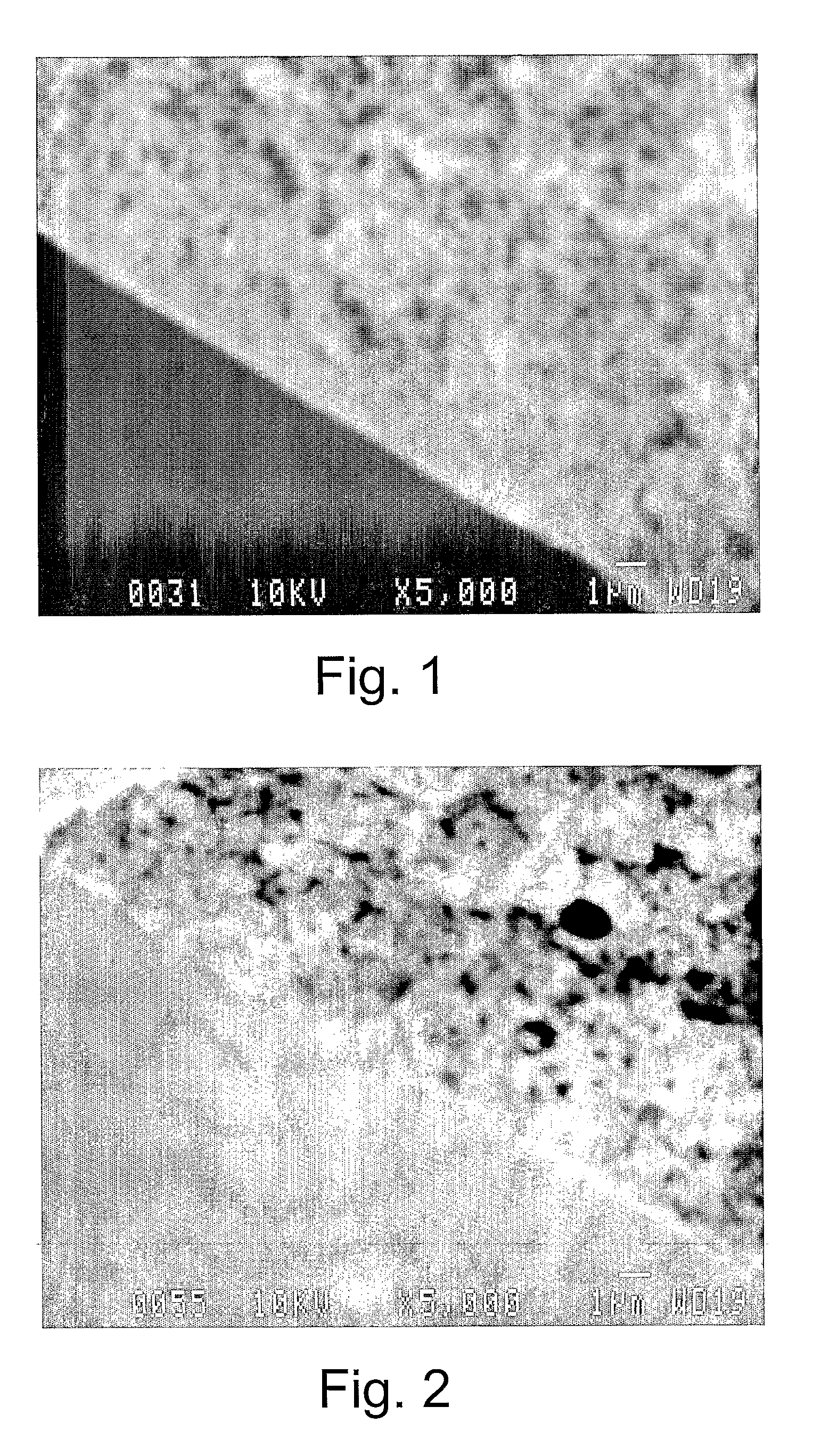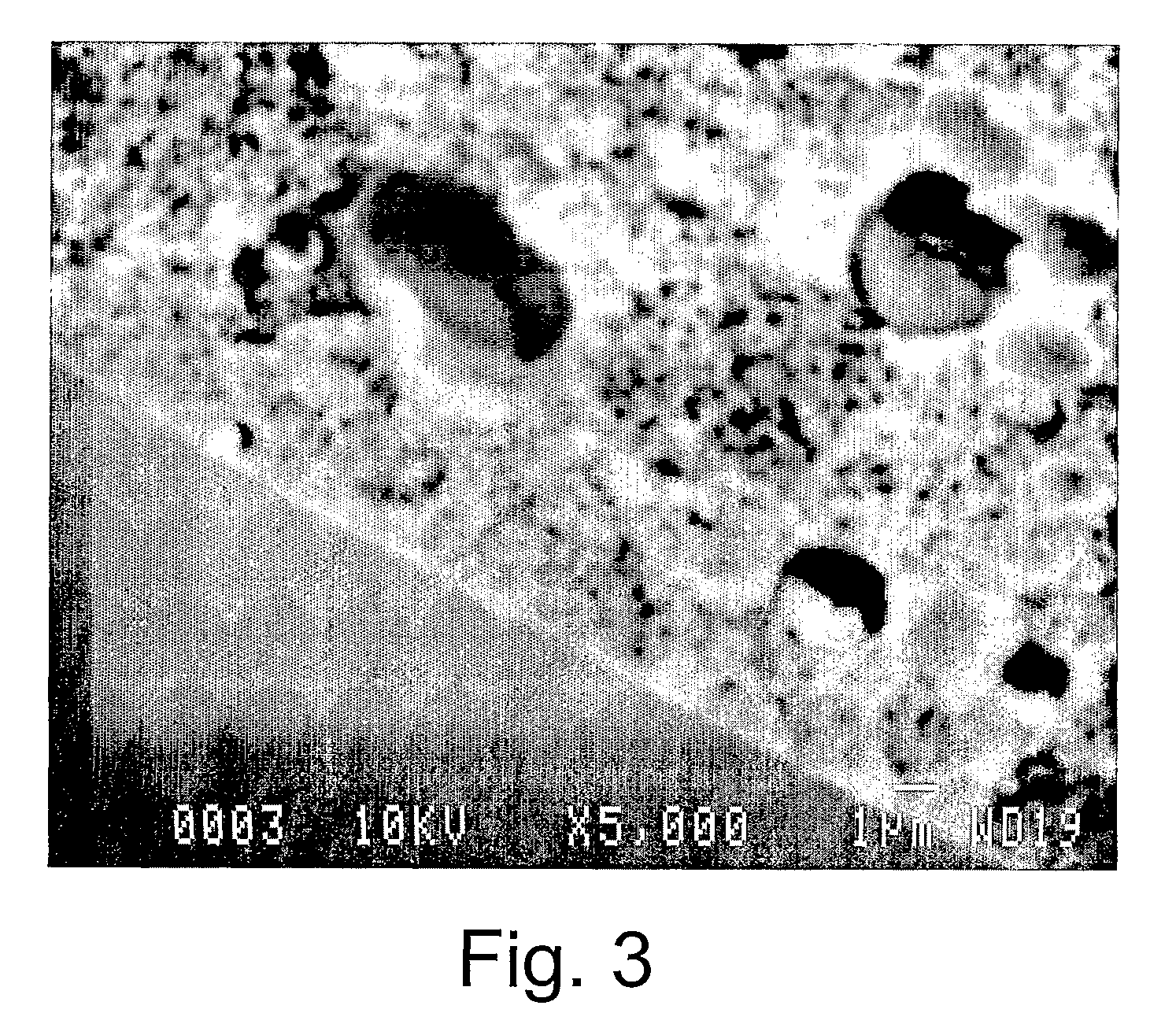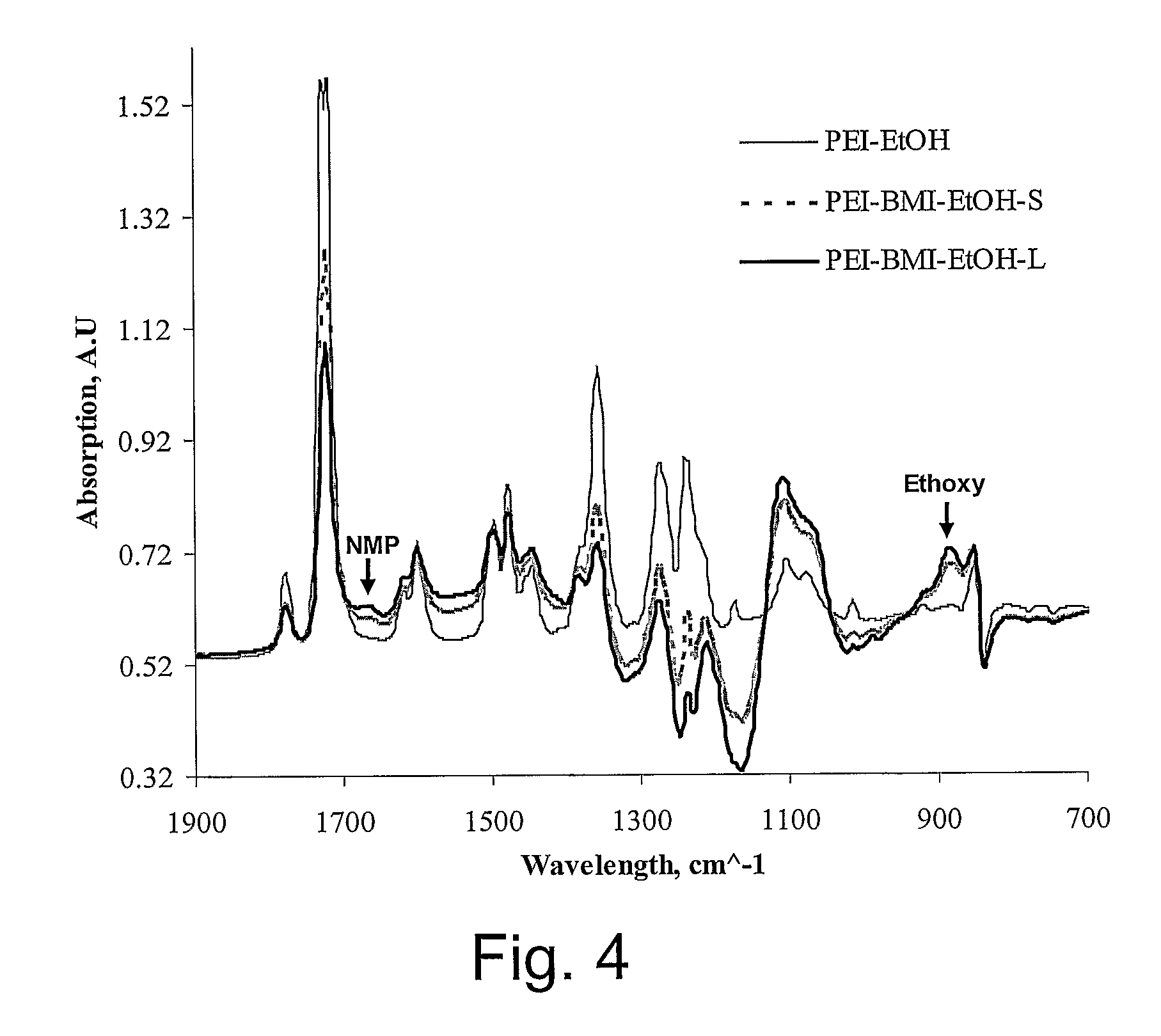Highly microporous thermoplastic/bismaleimide semi-interpenetrating polymer network
a polymer network and high-microporous thermoplastic technology, applied in the direction of membranes, separation processes, filtration separation, etc., can solve the problems of low flux for a low molecular weight cut-off membrane, difficult to achieve all these requirements, etc., and achieve superior characteristics and long time
- Summary
- Abstract
- Description
- Claims
- Application Information
AI Technical Summary
Problems solved by technology
Method used
Image
Examples
Embodiment Construction
Experimental Part
Materials
[0035]Aromatic polyetherimide (Ultem® 1000) was supplied by General Electric Plastics, USA in pellet form and was dried in an oven at 150° C. for 8 hours before use. Anhydrous 1-methyl-2-pyrrolidinone (Aldrich, 99.5%, reagent grade, water <0.005%), and 1,1′-(Methylenedi-4,1-phenylene) bismaleimide 95% were supplied by Sigma-Aldrich Canada Ltd. Anhydrous ethyl alcohol was received from Commercial Alcohols Inc., ON., Canada. Hexanes of ACS reagent grade were supplied by VWR, Canada. All solvents were used as supplied under a dry nitrogen atmosphere. Ultra high purity Helium and medical air were supplied by BOC Gases Canada Ltd and used as received without further purification.
Membrane Preparation
[0036]Samples of polyetherimide (PEI) with and without 1,1′-(Methylenedi-4,1-phenylene) bismaleimide (BMI) were prepared as flat asymmetric membranes by sol-gel technique. Polymerization of BMI monomer was carried out in polymeric solutions containing anhydrous 1-meth...
PUM
| Property | Measurement | Unit |
|---|---|---|
| reaction time | aaaaa | aaaaa |
| reaction time | aaaaa | aaaaa |
| diameter | aaaaa | aaaaa |
Abstract
Description
Claims
Application Information
 Login to View More
Login to View More - R&D
- Intellectual Property
- Life Sciences
- Materials
- Tech Scout
- Unparalleled Data Quality
- Higher Quality Content
- 60% Fewer Hallucinations
Browse by: Latest US Patents, China's latest patents, Technical Efficacy Thesaurus, Application Domain, Technology Topic, Popular Technical Reports.
© 2025 PatSnap. All rights reserved.Legal|Privacy policy|Modern Slavery Act Transparency Statement|Sitemap|About US| Contact US: help@patsnap.com



